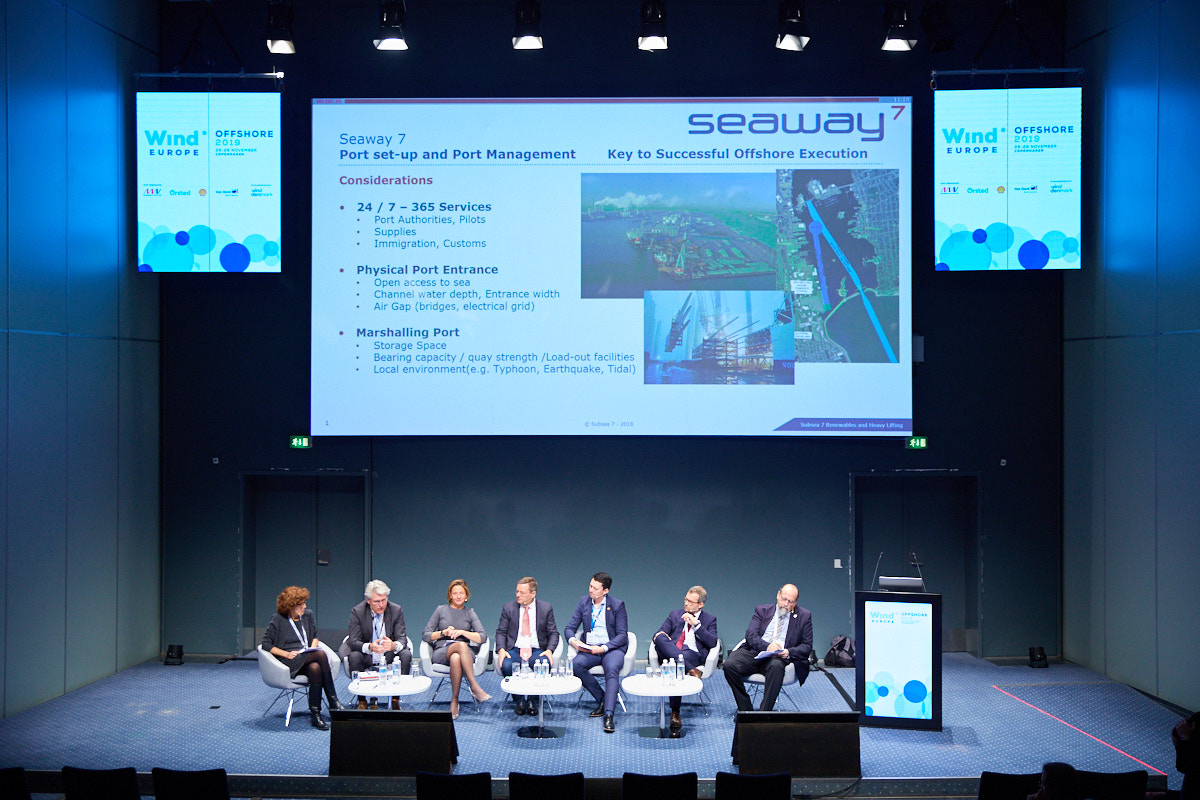Ports platform
Full industrialisation of offshore wind requires collaboration & communication between ports

WindEurope Offshore 2019 Copenhagen
27 November 2019
Collaboration and communication will be essential to successfully industrialise Europe’s offshore wind industry as it works towards 450 GW. That was the key take-away from this morning’s session on ports and the industrialisation of offshore wind. The session gathered a notably international audience, comprising many industry players from markets like Japan and India who are looking to develop their own supply chain and ports infrastructure.
The Port of Grenaa’s Theis Gisselbæk argued that we need strong political engagement and a clear pipeline of projects. “It’s very difficult for ports to look 5-10 years ahead. A masterplan is roughly 5-10 years and requires tens of millions in investment. We need to know the foundations and turbines to be installed ahead of time.”
Peter Toft of MHI Vestas emphasised that industrialisation of offshore wind will bring new challenges in terms of scale. Today we are seeing projects with a higher number of turbines to be installed, and the number of harbours suitable for this major infrastructural activity is smaller and smaller. “With the launch of the new report from WindEurope, we see how crucial the right infrastructure is. Often we see that risks are transferred to us or the developers which makes it harder to manage the project. We see new installation methodologies, floating installation vessels, floating foundations; all this brings higher and new requirements for the ports and the harbour.”
For this reason, it is important that ports think of the needs of tomorrow, and that governments factor ports into their National Energy and Climate Plans.
Dorothy Winters (Port of Amsterdam) added that “There are different challenges for us. We are competing against other sectors in the energy transition, all looking for people with technical backgrounds. You have to share the space with other users. Cooperation will be a necessity due to this scarcity.” We might face supply chain constraints. Communication will also be essential, said Seaway 7’s Richard den Hollander. “From the heavy lifting industry we need the ports, we need to constantly communicate. Investment comes with a horizon, if we know what’s coming then we can invest in the right vessels.”
EDP Renewables’ José Pinheiro said that “Floating will compete very soon with fixed foundations,” while Marie Tchakerian from the Port La Nouvelle said that floating is the most suitable technology for the resource and conditions available in the Mediterranean, which is why floating wind has a clear visibility in their National Energy and Climate Plan.
Floating represents a major opportunity for industrialisation, rather than project-based planning, and we will probably see a divergence between ports specialising in bottom-fixed and floating wind.
The panellists all agreed that any offshore wind investments in ports will definitely yield a strong return – so governmental decisions to invest should be made as soon as possible.
How can Europe reach 450 GW of offshore wind? Find out in our new report Our Energy, Our Future, How offshore wind will help Europe go carbon-neutral

